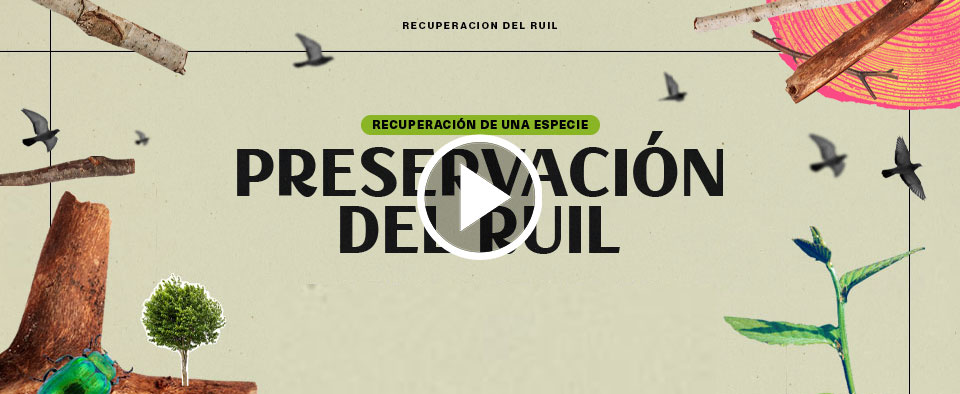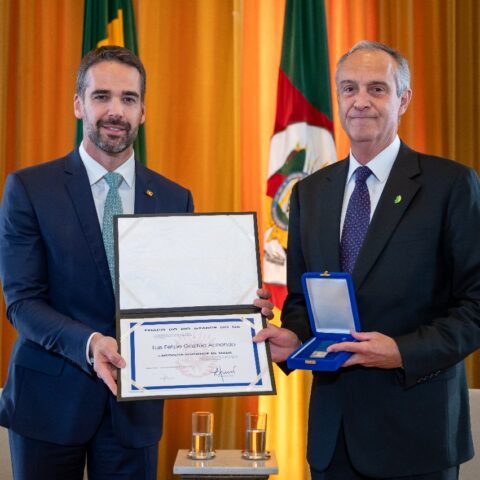
The Ruil Rises from the Ashes
10 de July, 2021
Even though it has been part of Maule’s landscape for millions of years, it’s not easy to find ruil in that region today because in spite of being ancient, it has certain characteristics that make it vulnerable. One of them is that it can only grow in the climate of Maule’s coastal area, where it is endemic, so its habitat is very limited. In fact, it is only found in a narrow, fragmented strip of 100 km between Cauquenes and Curepto. On the other hand, the introduction of new species into the area and the unbridled deforestation for the past 200 years have caused this tree to lose its territory.
Nevertheless, the attribute that proved to be decisive for its current classification as a critically endangered species was its bark, which is notoriously less thick than that of other species in the area. It is so thin that it was hard for it to resist the flames of the megafires that affected the Maule Region in 2017. On that occasion, 80% of its distribution was affected by the fire. But despite being burned, the species has not disappeared. Individuals are recovering and growing from basal burls or lignotubers.
As stated by the Ministry of the Environment, the ruil is one of the forest species that has been most reduced over the past four decades in the country. According to data published by CONAF after the megafires, there were 350 hectares of ruil at a national level.
Since it is an endangered species declared a Natural Monument in 1995, CMPC was already working on its conservation before the fires and had 64 hectares with presence of the species within a 138.8 ha protected area of Maulean deciduous forest. However, the fire prompted the acceleration of the recovery process. The original protection area was expanded to 311 hectares, 173 ha more than what CMPC had in 2017. The total area under the care of the company for the recovery of this species equals almost half of the size of the municipality of San Ramón in the Metropolitan Region.
The tree, which belongs to the same family as the oak and the coihue, is of great importance to biologists, as it is the most primitive representative of the Nothofagus, a genus that has 35 species of trees in the world, 10 of them in Chile. Francisco Rodríguez, Sustainable Fiber and Conservation Assistant Manager at CMPC and one of the professionals who has led the ruil recovery plan, explains: “The species is considered to be the grandfather of all Nothofagus; it is the most ancient one evolutionarily speaking. It’s like a dinosaur, and the one most at risk of disappearing.” Its scientific name Nothofagus alessandrii was given to it because Marcial Espinoza, the researcher who classified it in 1926, dedicated it to President Arturo Alessandri Palma.
In this effort to recover the ruil and accompanying species, the company decided to go from 138.8 to 311.9 hectares in the High Conservation Value Area of the El Desprecio farm in the Maule Region. Rodríguez reports that although the fire affected a large portion of the ruil population, it accelerated the originally planned restoration process: “The idea was to progressively increase the high conservation value surface area according to the harvest of radiata pine plantations that were next to our original ruil conservation area in Empedrado. But when these plantations were burned, the transformation process was immediately initiated.”
The recovery strategy contemplates increasing the ruil’s area and individuals, both in its parcels and third-party ones, and it is developed together with the Chilean Forests Dialogue and State institutions like CONAF and INFOR.
Given that the species is endemic to Maule’s coastal area, CMPC has collected seeds of individuals from the same town of Empedrado, and from them, it is currently producing plants annually at its Carlos Douglas nursery in the Bíobío Region. This way, it supports the enrichment and recovery of the species in the areas where it is protecting it, a land that the species has inhabited for centuries.
The ruil restoration work has contemplated the permanent extraction and elimination of the regeneration of exotic species such as the radiata pine, which after the fire germinated in thousands in the area where the species is being recovered, threatening the initiative’s success. In addition, the place has been fenced in to prevent livestock grazing, which constitutes one of the biggest threats to the recovery of this Nothofagus. Along with this, ruil individuals have been planted, enriching some sectors with a low presence of the species.
All this work has been carried out with the support of a local service company that has the particularity of having 3 family generations already working in it. In addition to this maintenance work, since the creation of the HCVA, we have been working with a group of university experts to monitor and study the area, its flora and fauna. This information, collected on a yearly basis, allows us to define the strategies for developing the restoration plan.














